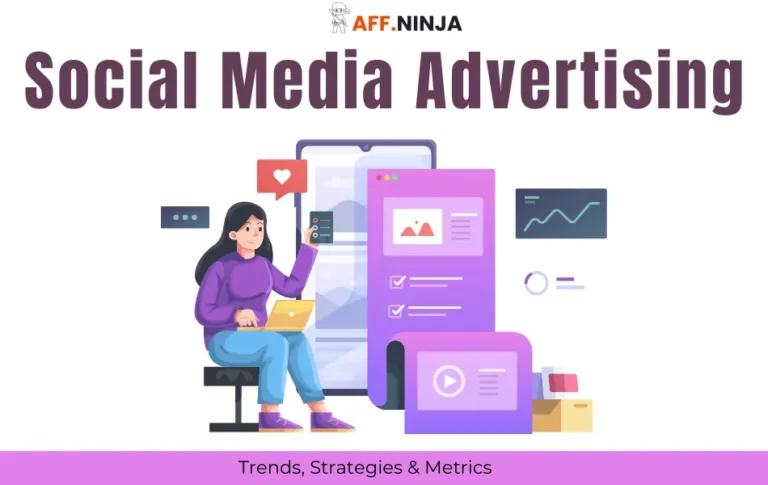Ever wondered how those ads you see online seem to magically appear at just the right moment? Well, it's not magic—it's the art and science of ad inventory management.
From maximizing fill rates to optimizing pricing strategies, there's a lot to consider. This article will get into ad inventory management, exploring key concepts, best practices, and innovative techniques to help you streamline your operations and boost your ad revenue.
Get ready to take a taste out of the spoonful of info on digital real estate and take your ad monetization efforts to the next level.
Ad inventory refers to the total available advertising space a publisher has to sell to advertisers across their digital platforms, including websites, mobile apps, and other online properties. It encompasses various ad formats such as display banners, video placements, native ads, and more. Publishers aim to maximize the value of their ad inventory by strategically managing and selling these spaces to generate revenue.
Know-Hows of Ad Inventory Management
Ad inventory management refers to the strategic process of overseeing, optimizing, and allocating available advertising spaces across digital platforms. It involves tracking, analyzing, and controlling the supply of ad placements to maximize revenue and efficiency for publishers while ensuring advertisers reach their target audiences effectively.
How Does It Affects Publishers and Advertisers?
Publishers need to juggle their ad inventory smartly to rake in the cash. More ad space means more stuff to sell. But it’s not just about quantity; quality matters too. High-quality ad space attracts big spenders. Publishers often use Supply Side Platforms (SSPs) to handle their inventory and get it in front of advertisers through Demand Side Platforms (DSPs), ad exchanges, or online ad networks.
| Metric | Impact on Publishers | Impact on Advertisers |
|---|---|---|
| Ad Space Volume | More space to sell, higher potential revenue | More chances to place ads |
| Ad Space Quality | Attracts high-paying advertisers | Ensures ads hit the right audience |
| Revenue Maximization | Balancing quantity and quality | Cost-effective ad placements |
For advertisers, good ad inventory is like hitting the jackpot. High-quality spaces mean their ads get seen by the right folks, boosting engagement and conversions. Different types of ad inventory, like display, video, or native ads, offer various ways to reach their audience.
When publishers and advertisers get ad inventory right, everyone wins. Ads get seen, money gets made, and campaigns succeed.
Want to get better at this game? Check out our tips on ad campaign optimization.
How to Calculate Ad Inventory?
Ad Inventory = Total Page Views × Number of Ad Slots per Page
Here's a breakdown of the components:
- Total Page Views: The number of times pages on your website are viewed over a specific period (e.g., daily, weekly, or monthly).
- Number of Ad Slots per Page: The average number of ad placements available on each page of your website.
For a more accurate calculation, you may want to consider additional factors:
- Fill Rate: Not all ad slots will be filled, so you can multiply the result by your expected fill rate (as a decimal).
(Total Page Views × Number of Ad Slots per Page) × Fill Rate
- Ad Viewability: You might also factor in the percentage of ads that are actually viewable to users.
- Frequency Capping: If you limit the number of times a user sees an ad, this could affect your total available inventory.
Tips For Efficient Ad Inventory Management
How to Make the Most of Your Ad Space?
Making the most of your ad space is key to boosting revenue and ensuring every inch of your digital real estate is put to good use. Two popular ways to do this are Real-Time Bidding (RTB) and Programmatic Direct.
Real-Time Bidding
Real-time bidding (RTB) is like an online auction where the highest bid gets the ad spot. It's quick, automated, and lets both marketers and publishers handle campaigns from one place. RTB helps marketers snag ad space at good prices, making the most of their budget.
Why to Consider RTB?
- Increased Revenue: RTB often leads to higher CPMs as multiple advertisers bid for each impression, potentially driving up prices.
- Improved Fill Rates: With a larger pool of potential buyers, you're more likely to fill your inventory, reducing unsold ad space.
- Better Targeting: RTB allows for more precise audience targeting, which can lead to higher engagement rates and better performance for advertisers.
- Flexibility: You can set floor prices and adjust them in real time based on performance and demand.
Programmatic Direct
Programmatic direct is a bit more personal. Here, a publisher sets a fixed price for ad space, and marketers can take it or leave it. This method often involves direct human interaction and is used by top-tier publishers to get higher prices for guaranteed spots.
Why Programmatic Direct is Cool?
- Guaranteed Revenue: Programmatic Direct deals often come with guaranteed volumes and prices, providing a stable income stream.
- Premium Inventory Monetization: You can sell your best ad spaces at higher rates while maintaining control over which advertisers appear on your site.
- Improved Relationships: Direct deals foster stronger connections with advertisers, potentially leading to long-term partnerships.
- Better Forecasting: With guaranteed deals, you can more accurately predict your ad revenue and plan accordingly.
Both RTB and Programmatic Direct have their perks and can be part of a solid media buying strategy. By getting the hang of these methods, marketers and publishers can make smart choices to get the best out of their ad space and hit their campaign targets.
Tackling Ad Inventory Management Headaches
Managing ad inventory can feel like juggling flaming swords—tricky and a bit dangerous. Publishers and advertisers often run into a few big headaches: ad fraud, viewability issues, ad blocking, and keeping advertisers happy. Let's break it down and see how to handle these challenges without losing your mind.
Ad Fraud and Viewability
Ad fraud is like the boogeyman of digital advertising. It sneaks in, messes with your clicks and impressions, and makes you waste money. To fight this monster, team up with trustworthy ad networks, demand they play fair, and invest in some solid ad fraud detection tools.
Then there's ad viewability. This is all about making sure your ads get seen by real people. If your ads are hiding in the corner of a webpage, they're not doing much good. Boost viewability by placing your ads where people will notice them and making sure they look sharp and engaging.
Ad Blocking and Keeping Advertisers Happy
Ad blocking is like a giant “No Trespassing” sign for your ads. Users install software to keep ads from showing up, which can really mess with your campaign's reach. To get around this, make your ads so good that people don't want to block them. Think relevant, high-quality content.
Also, consider other ways to make money, like sponsored content or affiliate marketing.
Advertisers are picky—they want their ads in safe, engaging spots. To keep them happy, be transparent, show them detailed performance metrics, and keep your ad spaces clean and user-friendly. For more tips on making your ads perform better, check out our section on ad performance metrics.
By tackling these issues head-on, you can make your ad campaigns more effective and keep everyone—publishers, advertisers, and users—happy.
Common Queries Related to Ad Inventory Management
How is Ad Inventory Calculated?
Ad inventory is typically calculated by multiplying total page views by the number of ad slots per page, adjusted for factors like fill rate and viewability.
What are the Benefits of Programmatic Direct for Publishers?
Programmatic Direct offers publishers guaranteed revenue, better inventory control, improved transparency, and the ability to foster stronger relationships with advertisers.
How does Ad Placement affect Inventory Value?
Ad placement significantly impacts inventory value, with more visible placements (e.g., above-the-fold) generally commanding higher prices due to increased viewability and engagement potential.
What is the Fill Rate in Ad Inventory Management?
Fill rate represents the percentage of ad inventory that is successfully sold and filled with ads, indicating how efficiently a publisher is monetizing their available ad space.
How does Seasonality Affect Ad Inventory Management?
Seasonality can significantly impact ad inventory value and demand, with certain periods (e.g., holidays) often seeing increased competition and higher prices for ad space.
What is the Difference between Premium and Remnant Inventory?
Premium inventory refers to high-value ad spaces often sold directly to advertisers, while remnant inventory consists of unsold ad spaces typically filled through programmatic channels at lower rates.
Doing It the Right Way
And there you have it – the ins and outs of ad inventory management! It may seem daunting at first, but with the right strategies and tools, you can make the most of your ad space and boost your revenue.
It won't be wrong to say that ad inventory management is all about finding that sweet spot between maximizing profits and keeping your audience happy.
Well, that's it for now, but if you seek to learn more and more into similar topics, check out our other articles on Media Buying.







